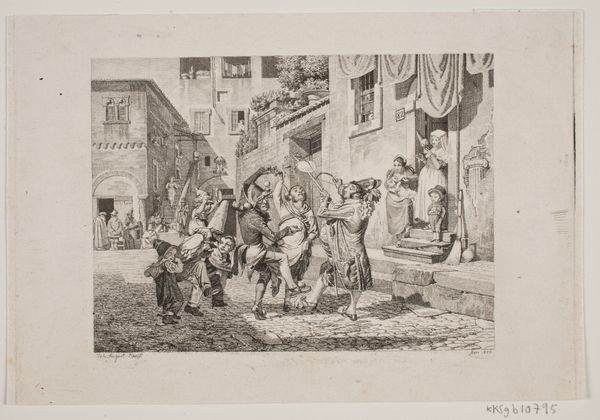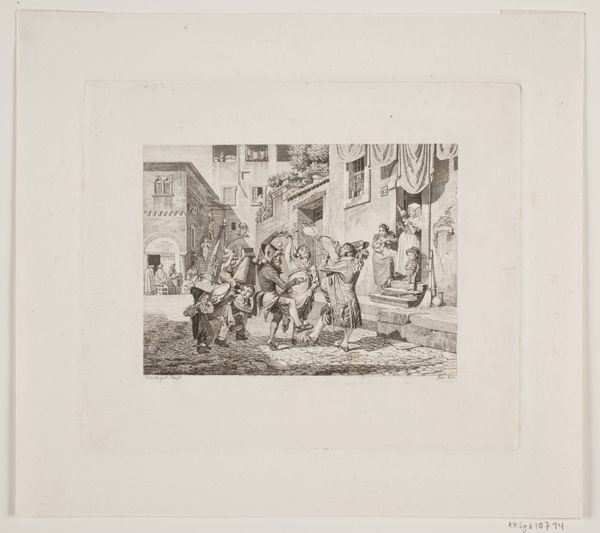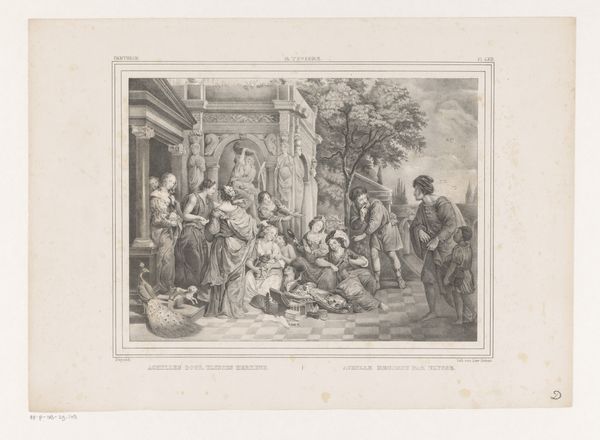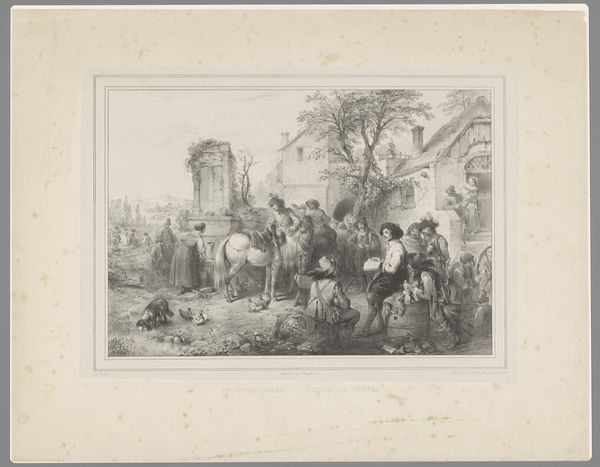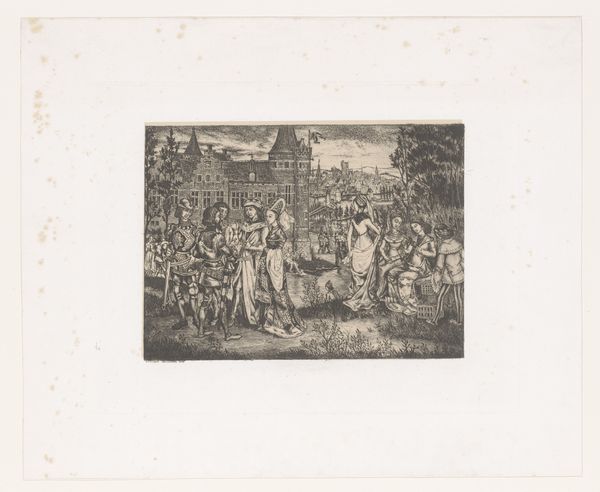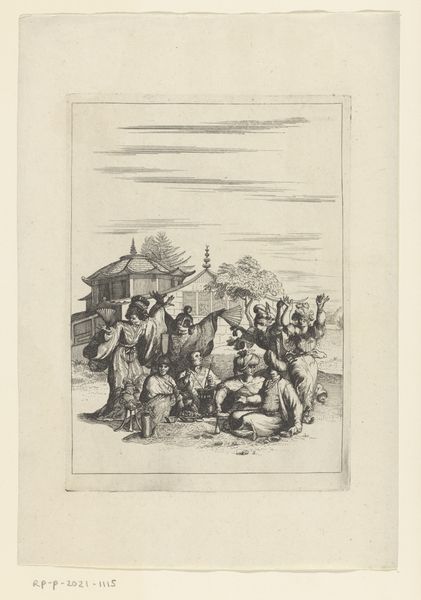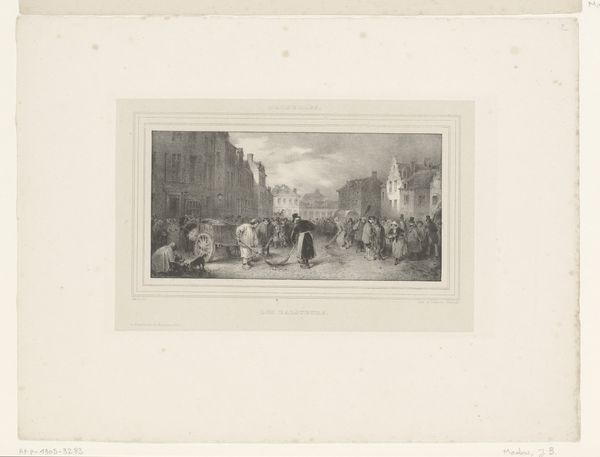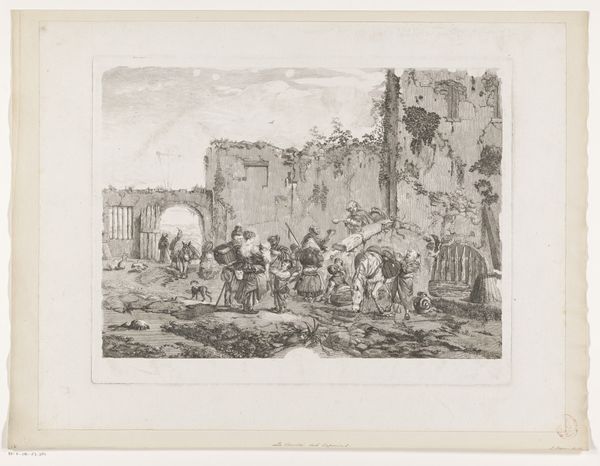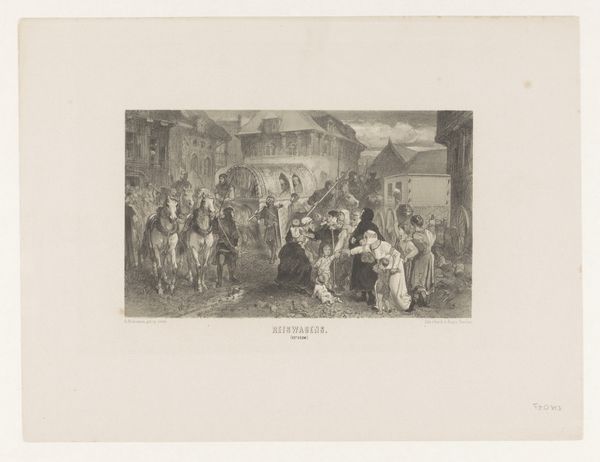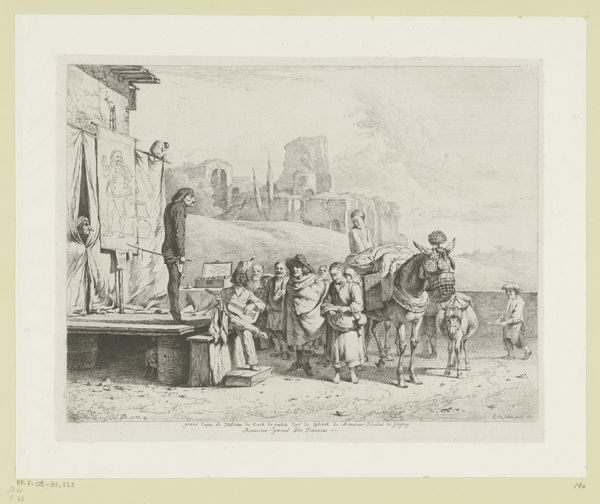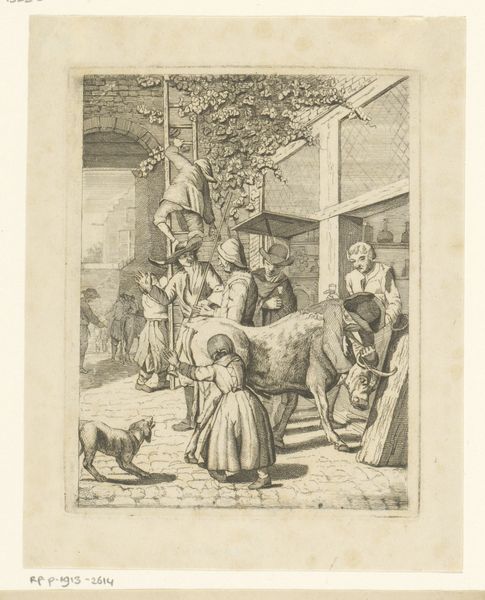
print, etching
#
narrative-art
# print
#
etching
#
figuration
#
romanticism
#
genre-painting
Dimensions: 139 mm (height) x 165 mm (width) (plademaal)
Editor: So this is August Krafft’s "Karnevalsscene," an etching from 1829. It’s teeming with figures and has a lively, almost chaotic energy. What strikes you most when you look at this print? Curator: The way Krafft uses the carnival, a traditionally transgressive and liberating festival, as a symbolic stage really grabs my attention. Consider the topsy-turvy nature of carnival – a reversal of social order is implied, a momentary rebellion against the everyday. Do you see how that translates visually? Editor: I guess I see it in the way everyone is clustered together and kind of bumping into each other? It does feel very un-orderly. Curator: Exactly. The act of dressing up in disguise is culturally significant –it’s a shedding of identity and adoption of another persona, maybe exploring forbidden desires or mocking authority figures, what the Russian theorist Mikhail Bakhtin called "carnivalesque." How might this be portrayed today? Editor: Interesting. So you think that the fact that they are literally wearing masks points at the heart of the print. Something universal about human desires, told through costume? Curator: Yes, the masks become potent symbols in that sense, revealing cultural attitudes through the way those figures are portrayed. And this links it to similar earlier portrayals of folly in art history. Editor: This makes me think differently about how much narrative detail can be held in just a small etching like this one. I was really just reacting to the mood at first. Curator: And that initial feeling is crucial. It is where the work begins to reveal itself. Always consider how the symbolism echoes across different periods. It builds connections.
Comments
No comments
Be the first to comment and join the conversation on the ultimate creative platform.
